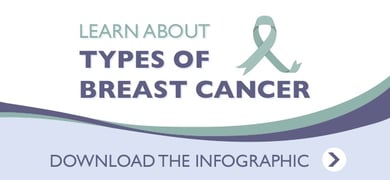 Receiving a call after a screening mammogram is a source of worry for many women. While it’s natural to be concerned, it’s helpful to keep in mind that the vast majority of women who are called back for follow up after a mammogram (more than 9 in 10) are not found to have breast cancer.[1] This is because there are a number of benign conditions that can raise the suspicion of breast cancer when they appear on mammography images. To determine whether a feature found on a mammogram is actually cancer, your doctor will order follow-up testing.
Receiving a call after a screening mammogram is a source of worry for many women. While it’s natural to be concerned, it’s helpful to keep in mind that the vast majority of women who are called back for follow up after a mammogram (more than 9 in 10) are not found to have breast cancer.[1] This is because there are a number of benign conditions that can raise the suspicion of breast cancer when they appear on mammography images. To determine whether a feature found on a mammogram is actually cancer, your doctor will order follow-up testing.
What can follow-up testing involve?
Additional Mammography
Most often, follow up to a screening mammogram begins with additional mammography images. This allows the radiologist to home in on the specific area of interest that was identified in the screening mammogram.
Ultrasound
An ultrasound is very useful in distinguishing solid masses from fluid-filled cysts. If a mass is found to be completely fluid filled, then no additional follow up is needed. If it includes solid material, however, then the radiologist will look more closely at its other characteristics to determine whether a biopsy is warranted. This may include the use of MRI for more precise imaging.
MRI
MRI can provide clarity and accuracy when images obtained through mammography and/or ultrasound are insufficient for visual examination of a breast abnormality. This is a more common issue among women with dense breast tissue, which makes visualization of possible cancers on mammographic images more difficult. For this reason, abbreviated breast MRI is now being offered as a supplement to screening mammography. It is available for women with average lifetime risk of breast cancer and/or dense breasts. Go to our website to calculate your lifetime risk of breast cancer.
Biopsy
If your radiologist suspects that cancer may be present after additional imaging is completed, then a biopsy will be needed to determine whether a suspicious area contains cancerous cells. A biopsy is the removal of cells from the body so they can be examined in a lab. This can be done by using a needle to extract tissue or by surgical removal of the suspicious area. To take a needle biopsy of a mass that can’t be located by touch (non-palpable), medical imaging is used to ensure the sample is taken from the correct area. Biopsy can be guided by mammography, ultrasound, or MRI.
What might follow-up tests find?
Follow-up tests might identify a number of reasons for the irregularity found on a screening mammogram. One possible reason, of course, is cancer. Other reasons, however, are many and varied.
Fibroadenomas
Fibroadenoma is a very common type of benign breast mass that, when palpable, tends to feel firm and rubbery beneath the skin. These can appear much like cancerous tumors on a mammogram, so when found, they are commonly biopsied. Sometimes, fibroadenomas are removed entirely if they continue to grow.[2]
Fibrocystic Changes
Fibrocystic changes is a general term used to describe fibrosis—thickening of the breast tissue, often caused by hormonal changes[3]—and cysts—round, fluid-filled sacs that often change throughout the menstrual cycle.[4] Fibrocystic breast changes are typically benign; however, cysts that contain some amount of solid material are often biopsied to rule out the presence of cancer.
Calcifications
Calcifications are small, harmless calcium deposits that are very common, especially following menopause. Some types of calcifications and patterns in which they appear, however, can signal that cancer may be developing.[5] If these are seen, then a biopsy will be recommended.
These are some of the most common types of benign breast changes, but there are others. The important thing to understand is that benign conditions like these are far more common than breast cancer. If breast cancer is found, then your doctor will work to determine details such as tumor grade, size, and type. For information about specific types of breast cancer, including prognosis and common treatments, see our free ebook.
[1] If You’re Called Back After a Mammogram. Cancer.org. https://www.cancer.org/latest-news/if-youre-called-back-after-a-mammogram.html. Published September 23, 2019. Accessed November 22, 2019.
[2] Fibroadenomas of the breast. Cancer.org. https://www.cancer.org/cancer/breast-cancer/non-cancerous-breast-conditions/fibroadenomas-of-the-breast.html. September 10, 2019. Accessed November 22, 2019.
[3] Breast Fibrosis. Moose & Doc Breast Cancer. https://breast-cancer.ca/brosis-oid/. Published May 6, 2019. Accessed November 22, 2019.
[4] Fibrosis and Simple Cysts in the Breast. https://www.cancer.org/cancer/breast-cancer/non-cancerous-breast-conditions/fibrosis-and-simple-cysts-in-the-breast.html. Published September 10, 2019. Accessed November 22, 2019.
[5] Breast calcifications. MayoClinic.org. https://www.mayoclinic.org/symptoms/breast-calcifications/basics/definition/sym-20050834. Published May 2, 2019. Accessed November 22, 2019.


